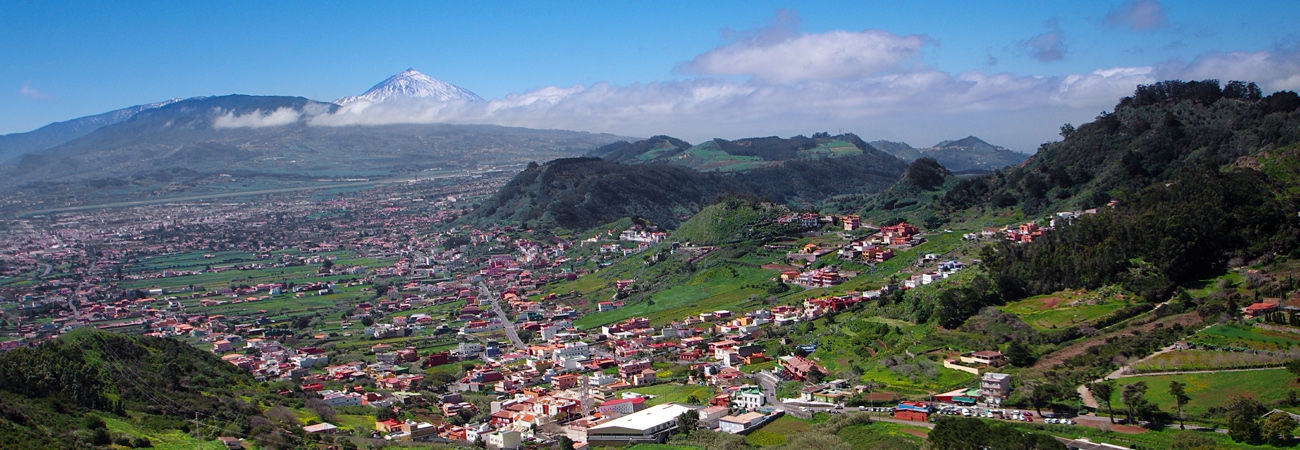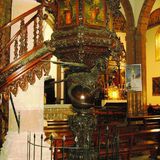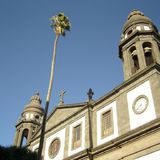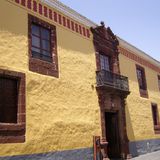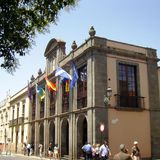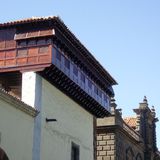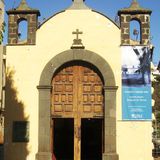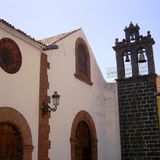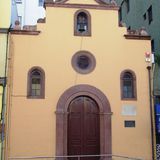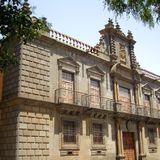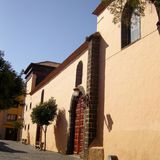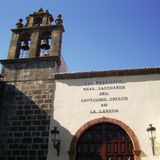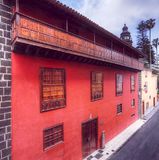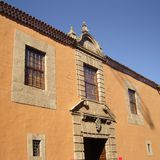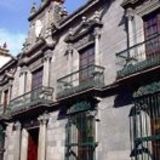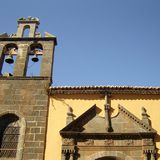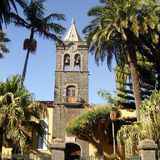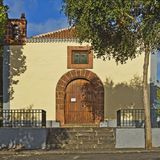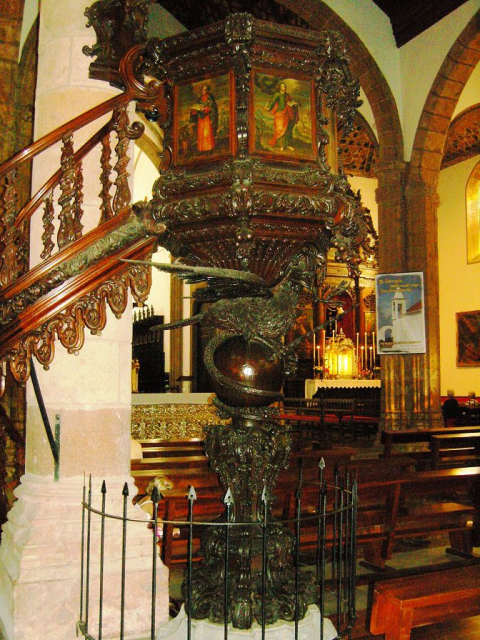La Laguna: World Heritage Site
The historic centre of San Cristobal de La Laguna is one of the three projects that the Spanish government presented to the UNESCO in 1998 as candidates for being declared World Heritage Sites. It was finally declared a World Heritage Site in December 1999.
This historic city centre, one of the most typical examples of the type of urban structure that was developed in Latin America during the process of colonisation, has maintained its grid layout intact. In the late 16 century, during the reign of King Phillip II, engineer Torriani, drew his plans of La Laguna, with an urban structure consisting of 400 buildings that have been listed with different degrees of monumental or environmental protection.
For an interesting cultural visit, we would recommend a walk through the streets of La Laguna; as there is so much to see and it is impossible to establish a single route.
3D STREET MAP: CLICK ON DOWNLOADS
GUIDED TOURS
The Tourist Board offers a regular or pre-arranged tour service around the historical city centre.
Regular tours: phone 922 63 11 94
Duration of the visit: Around 1 hour. The departure point is at the Oficina Municipal de Turismo (Tourist Office), located at the following address: C/ La Carrera or C/ Obispo Rey Redondo, no. 7 (Casa Alvarado - Bracamonte or Casa de los Capitanes).
Pre-arranged tours: Monday to Friday from 9 a.m. to 5 p.m., for the same duration and from the same departure point.
Please apply in writing to the Tourist Board at least 48 hours beforehand in order to arrange these tours (Email: coordinador@visitlalaguna.es - Fax: 922 608 974) including the following details:
Name and telephone of applicants.
Number of persons, indicating their age in the event of school groups.
Date, time and language requested.
Delegación de Turismo de La Laguna (Tourist Board)
C/ Carrera, 7 - Casa Alvarado Bracamonte
Tel. 922 60 11 06 - 922 60 11 07 ; Fax 922 60 89 74
Oficina Municipal de Turismo (Tourist Office)
Opening times: Monday to Friday from 9 a.m. to 5 p.m., Saturday and Sunday from 9 a.m. to 3 p.m.
Tel. 922 63 11 94
Email: coordinador@visitlalaguna.es
Web: http://www.aytolalaguna.com/ - http://www.turismodelalaguna.com/
Fundación Centro internacional para la Conservación del Patrimonio - CICOP.
Casa de los Capitanes - C/ Obispo Rey Redondo nº 5
38201 La Laguna
Tel. 922 603000 ext.3749 y 3750
Email: info@cicop.com
Web: www.cicop.com
CHURCH OF LA CONCEPCION
Tel: (+34) 922 259130 Visiting Times: Tuesday to Saturday, from 10 a.m. to 12 a.m. and from 5 p.m. to 7.30 p.m.; Sundays from 8.30 a.m. to 12 a.m. and from 5.30 p.m. to 7.15 p.m.
This was the first parish church of Tenerife and the mother house for all the other parishes created since the 16th century. The Governor decided it should be built on this site, after celebrating the Corpus Christi festivities in 1496 for the first time in Tenerife. The original church has undergone a large number of modifications and extensions over the centuries. It was re-built in 1974, after the naves started to collapse in the 60´s. The previous major reform had taken place in the 18th century from drawings by architect Diego Nicolás Eduardo. It was declared a National Historic-Artistic Monument in 1948. The layout is typical of Canary Island churches, with three naves, semicircular arches and Mudejar style heartwood moulded ceilings. The millstone tower is the third that the church has had, and was finished in 1697. The tower is now the most representative symbol of La Laguna. The church holds a rich artistic heritage within its walls. This includes the pulpit, a Baroque piece carved in fine wood at the end of the 18th century (anonymous author) and considered a gem, unmatched in its genre. The baptismal font, 15th century Seville ceramics, is of historical interest. It is said that it was brought to the Island by the first Governor and used to baptise the first three Guanches of Tenerife. Sculptures include: La Predilecta (La Dolorosa), by José Luján Pérez, in the Santisimo Cristo Chapel. El Cristo del Rescate, late Spanish Gothic, (16th century); San Pedro y La Inmaculada Concepción, the last carving (around 1849) of the Tenerife figure artist Fernando Estévez (1781 - 1854). La Piedad group, by Lázaro González (17th century). A figure of San José (17th century Genoa School) Paintings include: The famous San Juan Evangelista, by Cristóbal Ramirez, from which, according to tradition, blood was seen to flow in 1648. A large canvass by Cristóbal Hernández de Quintana 1651 - 1725, entitled Cuadro de Las Animas. The church also contains an important collection of precious metal work, like the Great Monstrance of the Marquis of Bajamar and the Corpus Christi monstrance; several reredos and a lovely choir, made in the early years of the 18th century by Rodríguez Bermejo.
CATHEDRAL
Built over the former church of Nuestra Señora de los Remedios, work on which started in 1515. Its origins are to be found in a small church built in 1511. It became a cathedral in 1818, when the Bishopric of Tenerife was created (Nivria Diocese) by a Papal Bull issued by Pope Pious VII. The building was declared in ruins in 1897 and it was completely demolished, except for the neo-classical facade built in 1820 from plans of the cathedral of Pamplona, designed by Ventura Rodríguez. The current building, opened in 1913 is neo-Gothic with crossed domes, built from plans drawn by engineer Rodrigo de Villabriga, who left the main facade exactly as it was.
The cathedral contains an interesting heritage in works of art: the tabernacle, made in 1795 by José Luján Pérez, sculptor from the island of Gran Canaria, finished off with an anonymous 16th century carving of Christ on the Cross, El Cristo de los Remedios, is in the chancel. There is also a great Baroque reredos of Los Remedios, from the first half of the 18th century, which has a splendid set of seven panels that supposedly come from the brush of Hendrick Van Balen, Van Dyck´s maestro, according to the theory of Matías Díaz Padrón, Curator of Flemish painting for the Prado Museum. These panels belonged to the Mazuelos Reredos, commissioned in Flanders by Pedro Afonso Mazuelos in 1597.
Another important reredos is the Señor de La Columna, done in neo-classical style.
A splendid Carrara marble pulpit, work of Genovese sculptor Pascuale Bocciardo in 1762; a great canvas called Las Animas del Purgatorio, by Canary Island painter Cristóbal Hernández de Quintana (1651 - 1725); La Santa Cena, by Juan Miranda.
Carvings include:
- La Virgen de los Remedios, in coloured wood form the beginning of the 16th century, and perhaps the first work of religious art to be done in Tenerife.
- Cristo atado a la Columna (Genoa School, 18th century).
- Nuestra Señora de los Dolores, by Spanish sculptor Carmona, 18th century.
- A figure of Christ, by Tenerife sculptor Fernando Esttévez.
- A beautiful figure of Nuestra Señora de La Luz, the largest carving in the Cathedral, which appears to be the work of the maestro Juan Bautista Vázquez the Elder, who founded the Seville School of the 16th century. This figure is kept in the Cathedral Museum.
- The Cathedral also has a neo-classical choir (19th century), work of maestro Domingo Pérez; a large Rococo monstrance worked in highly decorated silver; some tooled silver Corpus Christi processional biers; a large number of pieces of metal work from the Cordoba, Canary Island and American schools and a large collection of religious ornaments.
CASA DE LOS CAPITANES
Tel.: (+34) 922 601100 Visiting Times: Tuesday to Saturday from 11 a.m. to 1 p.m. and from 5 p.m. to 8 p.m. Mondays from 5 p.m. to 8 p.m. and Sundays from 11 a.m. to 1 p.m. (provided there is an exhibition). Captain General Diego de Alvarado-Bracamonte had this mansion built in the first third of the 17th century. It later belonged to the Marquises de la Breña and the Marquises de Mejorada. Several Captain Generals resided here during the 18th century. The building, recently restored and with facades overlooking calle Viana and calle Obispo Rey Redondo, has a door and niches of local red tuff; it has an interesting interior patio and represents a fine example of Canary Island style. It is currently the La Laguna City Museum and also houses the International Heritage Conservation Centre.
TOWN HALL / MAGISTRATE´S RESIDENCE
TOWN HALL Tel.: (+34) 922 601000 Visiting Times: Monday to Friday from 9 a.m. to 2 p.m. The La Laguna Municipal Offices have undergone several modifications since the 16th century: the most important one was when the present main facade was built in 1822 by Juan Nepomuceno Conejo, in quarry stone. This is one of the best examples of civil neo-classical construction in the Canary Islands. The part of the building that faces calle de La Carrera and Obispo Rey Redondo conserves the doorway of the former Mayor´s Residence. There is a crest of arms of Carlos V on the facade, with those of Tenerife and the Governor of the Island, Jerónimo de Sotomayor, on either side. The Council chamber has a fine example of Canary Island Mudejar moulded ceiling. It contains important relics, such as: • The standard used by Governor Alonso Fernández de Lugo when he conquered Tenerife for the Crown of Castile. • The Royal Patent of Queen Juana La Loca (1510), granting La Laguna the title of "Villa". • The coat of arms that is also the coat of arms of Tenerife. • Historic Archives, one of the most complete in the Canary Islands. MAGISTRATE´S RESIDENCE Visiting Times: Monday to Friday from 9 a.m. to 2 p.m. Building started in the first third of the 16th century and was completed in 1545. The facade has an excellent doorway made from red quarry stone. It is one of the most representative examples of Plateresque style in the Canary Islands. Its name ("Casa de los Corregidores" in Spanish) is due to the fact that it was the residence of the Island Magistrates during their period in office. It later became the residence of Bishop Joaquín Lluch y Garriga and currently holds council offices.
CONVENT OF SANTA CATALINA
Visiting Times: Monday to Saturday from 7 a.m. to 11.45 a.m. and Sundays from 6.30 p.m. to 8 p.m. (you can visit the patio) The Santa Catalina de Siena Dominican convent of cloistered nuns was opened in 1611 above the house of the Governors. It contains some interesting Baroque reredos, one in the chancel and the Virgen del Tránsito reredos and a tooled silver display case. The most interesting aspect of the convent church is the sculpture representing Santa Rosa de Lima, the work of Rodríguez de la Oliva. Once a year, on the 15th of February, the doors of the convent are opened to show the faithful the uncorrupted body of the Sister María de Jesús de León Delgado (1643 - 1731).
CHURCH OF SAN MIGUEL
Visiting Times: Whenever there are exhibitions It is located in Plaza del Adelantado. It was built in 1506 on the express orders of the Governor, Alonso Fernández de Lugo, and devoted to the Arcángel San Miguel. The figure of La Virgen de San Miguel is kept in the church of Santo Domingo, where it is worshipped every 29th of September, its Saint´s Day. After major restoration work carried out by the Tenerife Island Cabilido, the former church is currently an exhibition and cultural centre for the city.
CHURCH OF SANTO DOMINGO DE GUZMAN
Address: C/Sto. Domingo Tel.: (+34) 922 250077 Visiting Times: Tuesday to Saturday from 6 p.m. to 7.30 p.m. Sundays and holidays from 10 a.m. to 12 a.m. and from 6 p.m. to 7.30 p.m. The church has two naves and the building dates from the 17th century, although it has a 16th century Plateresque door. Interesting points include: the Mudejar moulded ceilings, some canvasses by Canary Island painter Cristóbal Hernández de Quintana and some frescoes by Mariano de Cossio (1860 - 1890) The belfry rests on the walls of the old Dominican Convent. The church also contains important figures and jewellery: • Señor Difunto (16th century) • Señor de la Humildad y Paciencia (17th century) • Figure of La Inmaculada, supposedly by Antonio Mario Maragliano, in coloured wood from the first half of the 18th century. • San Miguel, a carving from 1577 that belonged to the Hermitage of the same name, and is worshipped as the Patron Saint of the Island every 29th of September. Jewellery and precious metal work comes mainly from the workshops of La Laguna throughout the 18th century. The most important pieces are: • The great monstrance designed by sculptor José Rodríguez de la Oliva and made by Tenerife goldsmith Ildefonso de Sosa, considered the most valuable example of Canary Island precious metal work. • The Jueves Santo Throne • Silver jewellery of the Virgen del Rosario There is also an interesting baptismal font, that belonged to the former church of Los Remedios; Beatified priest José de Anchieta was baptised in this font. Anchieta was Apostle and founder of the city of Sao Paulo. His baptism certificate is still kept in the church.
CHURCH OF SAN CRISTOBAL DE LA LAGUNA
Address: Avda. de Calvo Sotelo Visiting Times: Generally closed. Founded at the beginning of the 16th century, is has undergone several transformations over the last few centuries. It is worth mentioning because it holds the city´s Patron Saint (San Cristóbal de La Laguna). Tradition has it that Fernando de Guanarteme, a native convert from the island of Gran Canaria, who formed part of Fernández de Lugo´s army in the conquest of Tenerife, is buried here.
NAVA PALACE
Address: C/ de Nava y Grimón Work started on this palatial building in 1585, on the orders of Tomás Grimón, magistrate of Tenerife. The building is considered an unusual example of Canary Island architecture because of the hybrid style of the facade, which is a mixture of Manierism, Barroque and neo-classical. This is due to the fact that two centuries passed, between it first being built and the last alterations done in 1776 by Tomás de Nava y Grimón y Porlier, fifth Marquis de Villanueva del Prado. The building reflects the evolution and the changes in artistic sensibility that occurred over the period of alterations and extensions. The central body is stone, similar to the stone in the Salazar Palace (presently the Episcopal Palace). This was done around 1681 by the quarry workers themselves. During the time of the fifth Marquis de Villanueva del Prado, the building housed the famous Tertulia de Nava, a group of intellectuals who enjoyed great influence in the period of enlightenment. The coat of arms of the Marquises de Villanueva del Prado is carved in stone in the centre of the facade.
CHURCH OF THE SANTA CLARA DE ASIS CONVENT
Address: C/ Nava y Grimón Tel.: (+34)922 257260 Visiting Times: 8 a.m. to 3 p.m. and 5.15 p.m. to 7.15 p.m. (notifying in advance) The Convent of Santa Clara (Franciscan Order), the first monastery established in the Canary Islands, dates from 1575. The church, devoted to San Juan Bautista, has a beautiful Mudejar moulded ceiling and houses an interesting collection of works or art, including figures of La Dolorosa, San Juan and La Magdalena, brought from the Americas and included in ceremonies of worship in the 18th century. It also contains two canvasses by Juan de Miranda and a group sculpture made up of the figures of El Señor del Huerto, the work of Luján Pérez from Gran Canaria, and Los Apóstoles Dormidos, by Rodriguez de la Oliva.
SANCTUARY DEL CRISTO
SANCTUARY DEL CRISTO (Church of El Cristo) (Former Franciscan Convent of San Miguel de las Victorias)
Address: Plaza de San Francisco (Plaza del Cristo) - Tel.: (+34) 922 259748
Visiting Times: from 8 a.m. to 8.45 p.m.
The Franciscans, who arrived in Tenerife with the conquest, raised the old San Miguel de las Victorias Convent in 1506. This was burned down in 1810, but the local people managed to save the figure of Christ. The Gothic style carving of El Cristo de La Laguna (second half of the 15th century), one of the most worshipped figures in Tenerife, reached the island in 1520, at the request of Governor Alonso Fernández de Lugo, to whom it had apparently been donated by the Dukes de Medina Sidonia to be worshipped in Tenerife. The figure is paraded in procession twice a year: once during the city fiestas (14th of September), when it is carried on a silver cross, and the other time during the parade on the eve of Good Friday, when it is carried on a simple wooden cross. The present church also contains: A figure of La Dolorosa by Canary Island sculptor Rodríguez de la Oliva; Another figure of San Francisco de Asis; A large legacy of jewellery and precious metal work, mainly from the best workshops of La Laguna.
CASA DE MONTAÑES / CASA DE LOS JESUITAS / CASA DE OSSUNA
CASA DE MONTAÑES (Canary Island Advisory Council) Address: C/ San Agustín This is one of the best examples of civil architecture to be found in La Laguna. Construction dates from 1746, built by Sargent Major Francisco Montañés. It has recently been restored by architect Sebastián Matías and has magnificent woodwork on the doors and windows. It is currently the offices of the Canary Island Advisory Council, but it can be visited from Monday to Friday from 8 a.m. to 1 p.m. CASA DE LOS JESUITAS Address: C/ San Agustín Building started in 1733, by the Jesuit fathers, who moved in in 1737 and moved out again in 1767, when they were expelled from the Island. The building has been used for several educational purposes. Here the University of San Fernando was born, with faculties of Law. This was the embryo of the Universtiy. It is currently the head offices of the Real Sociedad Económica de Amigos del País, that has an excellent library, mainly dating from the age of enlightenment. It also has valuable archives with documents from the House of Nava y Grimón, Tabares de Nava and the legacy of chronicler Rodríguez Moure. The library is open for visiting from Monday to Friday, from 4 p.m. to 6 p.m. CASA DE OSSUNA The house was built by Captain Manuel Delgado in the mid 17th century and later passed into the hands of the Ossuna family. The house is now used as an archive and headquarters of the Institute of Canary Island Studies. The extensive archives hold many interesting documents, especially documents concerning the Anchieta family, the most famous of which was the Jesuit José de Anchieta, born in La Laguna in 1534, evangeliser of Brazil and founder of the city of Sao Paulo.
CASA DE LERCARO (HISTORY MUSEUM)
Address: C/ San Agustín, 22 Visiting Times: Tuesday to Sunday from 9 a.m. to 7 p.m. Monday closed.
Francisco Lercaro de León, Lieutenant General of Tenerife, had the house built in 1593. It is a fine example of Canary Island civil architecture. The interior patio is unusual among Canary Island patios in that it has wood carvings on the upper floor. The facade has a central body of stone work, with the coat of arms of the original owner. Another striking feature is the finish of the walls, which imitates renaissance brickwork and patterns. There are some fine tooled wooden panels in the house, with stylised plant designs, highlighting the parapet of the corridor. All the rooms have fine moulded ceilings, the main staircase, made of the same stone that has been used in the entrance portico and in the pillars of the patio, is supported by a dome and a semicircular arch. The building, property of the Island Cabildo, has been restored and fitted out to house the Tenerife History Museum and Island Archives. The eleven rooms are equipped with explanatory panels that take the visitor through the history of the Island. There is an extensive collection of maps of the Canary Islands, with works dating from the 16th century.
EPISCOPAL PALACE OR CASA SALAZAR
EPISCOPAL PALACE OR CASA SALAZAR (Palace of the Counts del Valle de Salazar) Address: C/ San Agustín Tel.: (+34) 922 258640
On the 23rd of January, 2006, it was devastated by a fire that reduced to ashes the incalculable value of the artistic heritage it held within.
This used to be the palace and residence of the Counts del Valle de Salazar, who commissioned the building in 1664. The facade is the work of Juan González de Castro Illada, built in 1681 by Canary Island stone masons Juan Lizcano and Andrés Rodríguez Bello. The sober and balanced Baroque design makes this facade, in the opinion of many people, the finest example of civil architecture in the Canary Islands. Before it was acquired in the 19th century as the seat of the Bishops of Nivaria and Offices of the Curia, it housed the El Porvenir Casino. The piano was used by Teobaldo Power to compose most of his Cantos Canarios. The interior, laid out around a patio with pillars that support the galleries, contains important works of art, with paintings by Francisco Bonnin, José Aguiar, Mariano de Cossio, Manuel Lópex Ruiz and Martín González, and sculptures including busts of Bishops Rey Redondo and Fray Albino, by Mariano Benlliure.
CHURCH OF NUESTRA SEÑORA DE LOS DOLORES HOSPITAL
Address: C/ San Agustín Most of the present building dates from the beginning of the 18th century, although the front is 17th century. It has a single nave. Inside, it contains: • A canvas by Cristóbal Hernández de Quintana, entitled El Sueño de San José • An embossed Nativity Scene from the 17th century. • An interesting painting, El Ecce Homo, both from the Canary Island School and two sculptures by Antonio Manragliano. Another interesting painting is the large panel representing the Crucifixion with La Virgen and San Sebastián on either side. It is very well painted and one of the oldest to be brought to Tenerife.
CABRERA PINTO CANARY ISLAND HIGH SCHOOL
Address: C/ San Agustín Tel.: (+34) 922 259407 For a long time, it was the only centre of secondary education in the Canary Islands. During the 19th century, many of the internationally famous Canary Islanders of the 20th century, like Benito Pérez Galdós, Blas Cabrera Felipe and Tomás Morales, studied there. Until the sale of church lands in the 19th century, it was a convent of Augustinian Friars, devoted to El Espiritu Santo. The Order was established in 1504 in La Laguna, and were granted the corresponding licence to give classes in 1701. The convent, as the core of an influential educational project, enabled the island to create the University of La Laguna. Of the age in which it was built, completed in 1560, it conserves several architectural features, like the cloisters, of red quarry stone, and the interior patio, one of the loveliest in the Canary Islands. It was visited by Miguel de Unamuno. The Canary Island High School, heir of the first University, also conserves important scientific collections and works of art, including paintings of the Romantic Museum of Madrid
CHURCH OF SAN BENITO ABAD
Address: Marqués de Celada Visiting Times: During church services. Building finished in 1554 and it was re-built in 1636. Located in the neighbourhood of San Benito, near the church of La Concepción, it has been fully restored. It has a single nave, with a red stone arch framing the main door and typical Mudejar moulded ceiling, representative of many Canary Island churches. The San Benito popular pilgrimage has given the place far more importance. Every year the faithful make the pilgrimage in homour of the Patron Saint of farmers and of the crops. It is held on the first Sunday of July, and has become one of the most important pilgrimage festivals of the Canary Islands.







